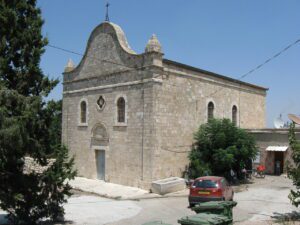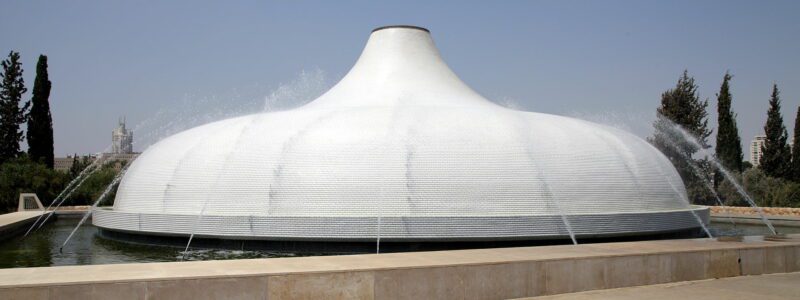Historical Reliability of the Gospels
The historical reliability of the gospels offers another means for determining their historicity. There are two means for determining the authenticity of any historical account.
The first is the most obvious; does the historical account have events that can be corroborated by multiple accounts. This becomes progressively more difficult as the historical account becomes more remote. Sometimes corroborating accounts become lost to history due to their loss or destruction. Think for example of all the historical accounts that were lost during the destruction of the ancient Alexandria papyrus library.
The second means for determining the reliability of an ancient historical account is more subtle. Are there details in the account that only a recorder from the same culture and time of the event would notice? These details speak volumes as to the authenticity of the historical event as such details would not have been known to a recorder writing much later or from a different culture.
It is the application of this second test to some subtle details of well-known New Testament Bible stories to help determine their authenticity.
Determine the Historical Reliability of the Gospels
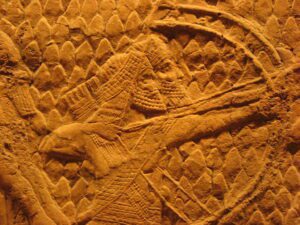
Assyrian Archers
The pagan mystery religions describe their gods and goddesses in another worldly fashion who seldom traveled to actual historical places and interacted with real historical people. What happened in pagan mythologies could be placed anywhere in time as there is no description of actual historical events. Even in the ancient cultures of the Assyrians or Babylonians, writers would place their history in the context of other corroborating historical events. This helps to establish the story as authentic and not just an invention of the writer’s mind.
The New Testament reveals Christ in a real historical context. The Roman world is described in accurate detail with the protagonists interacting with real historical people in a real historical context. The historical and geographic details read more like an actual event than like Greek mythologies. Actual names of local Roman officials are provided to give historical context to the events described.
Historical geography seeks to relate historical events in their geographic location in relation to other events occurring at the same time. As McDowell notes,
Historical geography seeks to relate events in history to geographic locations. Knowing what has happened in a certain location in the past reveals why Jesus would do something at that location when He was there. Since it would be practically impossible for a later Gentile writer to have knowledge of the historical-geographical context surrounding an event in Jesus’ life, these incidents provide good evidence that what the gospel writers describe actually happened.
The Widow of Nain
The story of the widow of Nain offers some insight into the historical background of the gospels. It is only told in the gospel of Luke but it a powerful story of faith and healing. In ancient Israel, women without a husband or a son had little means for livelihood. Jewish people had been admonished since the time of Moses to take care of the widows and the orphans. Unfortunately, this advice frequently landed on deaf ears and poor widows were left to fend for themselves as best as they could. This means that many destitute widows might die from starvation as the local community ignored their plight. It was likely that Christ, hearing the death of the widow’s only young son, had compassion on her and decided to intervene.
Luke gives the background to this story which helps to add some flesh and blood to the account. Nain was a small farming village in the time of Jesus on the east side of the Jezreel valley. During Christ’s time, this village was little more than a few families, has always been poor, and has always been in the backwaters of the Jewish community.
Luke begins his account with Christ in the city of Capernaum just having healed the Centurion’s servant (Luke 7:1 – 10). It was on the day after that Christ went to the city of Nain accompanied by a large group of his disciples. What is important is that Nain is on the top of a small mountain at an elevation of 700 feet above sea level, while Capernaum is in a valley at about 600 feet below sea level. Nain is located about 30 miles from Capernaum making it an arduous journey for just one day – especially going uphill. He was very intentional in making this trip.
The reason why Christ made this arduous trip possibly can be explained by knowing something else. Near Nain is located the place where Elisha resuscitated the dead son the Shunammite woman. The people of that region were likely still very familiar with that miracle. Jesus was able to establish his authority by performing a similar miracle a short distance away in a nearby town. This is why the people of Nain responded when they saw this miracle,
A great prophet has arisen among us!
God has visited his people!
Christ made this arduous 30-mile trip uphill in a day to raise the dead son of the widow of Nain to connect himself to another great miracle by Elisha hundreds of years previously. This is an example of subtle details in Scripture linking the Old and New Testament which would be missed by a casual observer, and add an element of authenticity to the event.
Mary and Joseph travel to Egypt
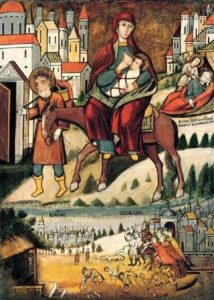
Russian Icon of Christ’s Family Fleeing to Egypt – Public Domain, Link
The ancient people of Israel would not have been surprised about Mary and Joseph traveling to Egypt rather than another nearer location. Alexandria in Egypt housed a large and old Jewish people, with eighty-five percent of all Jews living outside the geographic limits of Israel. Mary and Joseph might even have had friends or relatives near or around Alexandria at that time where they could stay until Herod the Great had died.
The large community of Orthodox Jews living in Egypt at the time explains why the family made that long trip to a foreign country. Theoretically, they could have moved northward to Galilee or the regions north around Mt. Hermon which would serve as a focal point for Christ’s future ministry. The fact that they went south is consistent with the known dispersion of the Jewish people of the time.
The “Mother Fish”
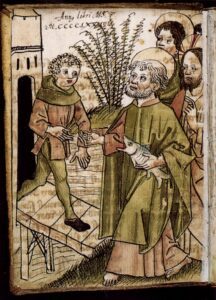
Peter with a fish with coin in its mouth. Public Domain, Link
One of the more interesting stories is that of the “mouth breather” fish that form an important role in an interesting Biblical narrative. The fish is native to the Sea of Galilee, Lake Victoria in Uganda, and along the Nile river. The significance of this particular fish is explained by Dr. Jim Fleming who teaches archaeology and historical geography at Hebrew University in Jerusalem,
The female keeps the eggs in her mouth until they hatch. As the brood begins to grow she lets them out from time to time on an “outing,” but quickly scoops them up when danger is near. The mother will fast until near starvation in order not to swallow her young. The strong instincts have given the Hebrew name of the Fish, “The Mother-Fish.” After the young are off on their own the mother often keeps a substitute in her mouth. They are sometimes caught today with pebbles or coke bottle caps in their mouths! The popular name for the fish is “St. Peter’s fish” because of the gospel story in Matthew 17:24-27 about Peter catching a fish with a shekel coin in its mouth.
The Withered Fig Tree and Mustard Seeds
One of the most interesting stories in the Gospels has to do with a particular fig tree. It turns out there is a particular fig tree in a town called Bethphage which is on the side of the Mount of Olives facing away from Jerusalem. The name “Bethphage” literally means the “house of phage” (just like Bethlehem means the “house of bread.”) The phage is an unripened but edible fruit that grows on the fig trees of the region. Usually, the fruit appears when the leaves also first appear. This is why Christ was looking for figs on the fig tree when the text specifically says, “It was not the season for figs.”
Even though it was not the season for ripe figs, it was the season for phage which apparently were not present. Since the tree contained no fruit, Jesus used it as an object lesson to warn against unfaithfulness or the lack of “bearing fruit” in your life.
This obscure story shows a definite familiarity with the local area and customs of ancient Israel. It would be unlikely these customs would have survived the total destruction of the entire region by the Romans during the Jewish Revolt from 70 – 73AD. This is what makes these obscure references to an unripened fruit so important as it establishes the historicity of the Scripture.
The small village of Bethphage is on the southern face of the Mount of Olives. From this region in the distance, it is possible to see the Herodium with the Dead Sea just beyond it. Herod built the Herodium as a fortress between 24 and 15 BC. It is an impressive site, high above the surrounding area with the land sloping down to the Dead Sea. Immediately cursing the fig tree for not bearing fruit, he looked off in the distance at the Herodium and the Dead sea and made the proclamation,
I say to you, whoever says to this mountain, ‘Be taken up and cast into the sea,’ and does not doubt in his heart, but believes that what he says is going to happen; it shall be granted him.” (Mark 11:23).
Christ was likely referencing the Herodium as the mountain and the Dead Sea into which the mountain could be cast.
Mustard plants are another object lesson on faith. The mustard seed is very small; hundreds can fit on the fingertip. But even though the mustard seed is tiny, under the right circumstances it will grow into a mighty mustard tree. Jesus noted,
The kingdom of heaven is like a mustard seed … and this is smaller than all other seeds, but when it is full-grown, it is larger than the garden plants and becomes a tree, so that the birds of the air come and nest in its branches (Matthew 13:32).
The Meaning of Nazareth

Sprout.
Christ was raised in a tiny village in the Galilee region of Israel. Nazareth comes from the Hebrew netzer which means “branch” or “shoot.” Sometimes when a tree is chopped down, small branches will sprout from the dead stump allowing a new tree to grow where the old dead tree had been.
It seems like a rather odd name to give a village – why would it be called a “branch”?
Much of the Old Testament concerns ancient Israel and what happened to that Kingdom due to their disobedience. The northern half of the country was destroyed by the Assyrians in 722 BC and taken away into captivity. The southern part of the Kingdom known as Judah (although consisting of the two tribes of Judah and the small tribe of Benjamin) was destroyed by the Babylonian Empire in 586 BC.
The ancient prophets spun a metaphor in Scripture concerning the eventual rebirth of Israel. They used a metaphor of Israel being like a tree that had been cut down and destroyed, but that destruction would not be permanent. Israel would be reborn and led by a messianic figure called “the branch,” as in ISahai 11:1-4,6,
A shoot will grow up from the stump of Jesse
a branch will sprout from his roots
TheLORD’s spirit will rest upon him,
a spirit of wisdom and understanding,
a spirit of planning and strength,
a spirit of knowledge and fear of the LORD.
He will delight in fearing the LORD.
He won’t judge by appearances,
nor decide by hearsay.
He will judge the needy with righteousness,
and decide with equity for those who suffer in the land.
[And in those days] the wold\f will live with the lamb,
and the leopard will be down with the young goat,
the calf and the young lion will feed together
and a little child will lead them.
This is a powerful prophecy that has only partially been fulfilled but speaks of a future leader who would be the Messiah. Christians understand this person to be Christ. Christ is the “branch” that would spring up from the stump of Jesse (the father of David).
The village founders might have been expressing their hope that God would eventually one day restore Israel. They were hoping that although Israel had been destroyed by the Assyrians, the Babylonians, the Greeks, and finally the Romans, a righteous “branch” would arise from this defeat.
The small branch was a sign that with God there are no hopeless causes. Little did these founders know that the branch foretold in Isaiah, Jeremiah, and Zechariah would be a child who would grow up in their own village. He would be the branch that would re-establish Israel with a new covenant and lead them back to God.
Summary
One of the attributes of real historical accounts relates to their being placed in a period of time. Ancient Roman and Greek mythologies do not relate to any actual historical accounts that are independently verified.
This is not the case with Scripture. The gospels especially are filled with historical accounts that place the story in a certain period of history. The secondary characters in the story are independently verified, with real physical places that are being verified by archaeological digs.
But what can be particularly telling are the little details that could only have been known to authors writing at the time the events occurred. These little historical details are otherwise lost to history and would certainly not be known to a writer from another culture or another time.
All these things add to our confidence as to the historicity of the events themselves, especially with respect to the greatest event in world history – the Resurrection.
More about that later!

